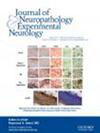Sevoflurane anesthesia during late gestation induces cognitive disorder in rat offspring via the TLR4/BDNF/TrkB/CREB pathway.
IF 3.2
3区 医学
Q2 CLINICAL NEUROLOGY
引用次数: 0
Abstract
Sevoflurane (Sevo) is widely used for general anesthesia during pregnancy. Emerging evidence indicates that maternal Sevo exposure can trigger developmental neurotoxicity in the offspring. Nonetheless, the underlying mechanisms need further investigation. Pregnant Sprague-Dawley rats on gestational day 18 were exposed to 3.5% Sevo to induce the rat model of neurotoxicity. TAK-242, a TLR4 inhibitor, was administrated to inhibit the signaling transduction. Hippocampal tissues of rat offspring were harvested for immunohistochemical staining, TUNEL staining, Western blotting, ELISA, and measurement of oxidative stress-related markers. Serum samples were collected to evaluate lipid metabolism-associated factors. Morris water maze was implemented to test the cognitive function of offspring rats. Rat hippocampal neurons were isolated to elucidate the effect of TAK-242 on the BDNF/TrkB/CREB signaling in vitro. The results showed that maternal Sevo exposure during the third trimester induced neuroinflammation, lipid metabolism disturbance, and oxidative stress, and impaired the spatial learning and memory of rat offspring. Sevo upregulated TLR4 and impeded BDNF/TrkB/CREB signaling transduction in the hippocampus of rat offspring; TAK-242 administration reversed these effects. In conclusion, Sevo anesthesia during late gestation impairs the learning and memory ability of rat offspring possibly by promoting neuroinflammation and disturbing lipid metabolism via the TLR4/BDNF/TrkB/CREB pathway.妊娠晚期七氟醚麻醉通过TLR4/BDNF/TrkB/CREB途径诱发大鼠后代认知障碍
七氟醚(Sevo)被广泛用于孕期全身麻醉。新的证据表明,母体接触 Sevo 会引发后代神经发育中毒。尽管如此,其潜在机制仍需进一步研究。妊娠 18 天的 Sprague-Dawley 妊娠大鼠暴露于 3.5% 的 Sevo,诱发大鼠神经毒性模型。TLR4抑制剂TAK-242可抑制信号转导。采集大鼠后代的海马组织,进行免疫组化染色、TUNEL 染色、Western 印迹、ELISA 和氧化应激相关标记物的测量。收集血清样本以评估脂质代谢相关因子。采用莫里斯水迷宫测试后代大鼠的认知功能。分离大鼠海马神经元以阐明 TAK-242 对体外 BDNF/TrkB/CREB 信号传导的影响。结果表明,母体在妊娠三个月期间暴露于Sevo会诱发神经炎症、脂质代谢紊乱和氧化应激,并损害后代大鼠的空间学习和记忆能力。Sevo能上调TLR4,阻碍后代大鼠海马中BDNF/TrkB/CREB信号转导;服用TAK-242能逆转这些影响。总之,妊娠晚期Sevo麻醉可能通过TLR4/BDNF/TrkB/CREB途径促进神经炎症和扰乱脂质代谢,从而损害大鼠后代的学习和记忆能力。
本文章由计算机程序翻译,如有差异,请以英文原文为准。
求助全文
约1分钟内获得全文
求助全文
来源期刊
CiteScore
5.40
自引率
6.20%
发文量
118
审稿时长
6-12 weeks
期刊介绍:
Journal of Neuropathology & Experimental Neurology is the official journal of the American Association of Neuropathologists, Inc. (AANP). The journal publishes peer-reviewed studies on neuropathology and experimental neuroscience, book reviews, letters, and Association news, covering a broad spectrum of fields in basic neuroscience with an emphasis on human neurological diseases. It is written by and for neuropathologists, neurologists, neurosurgeons, pathologists, psychiatrists, and basic neuroscientists from around the world. Publication has been continuous since 1942.

 求助内容:
求助内容: 应助结果提醒方式:
应助结果提醒方式:


